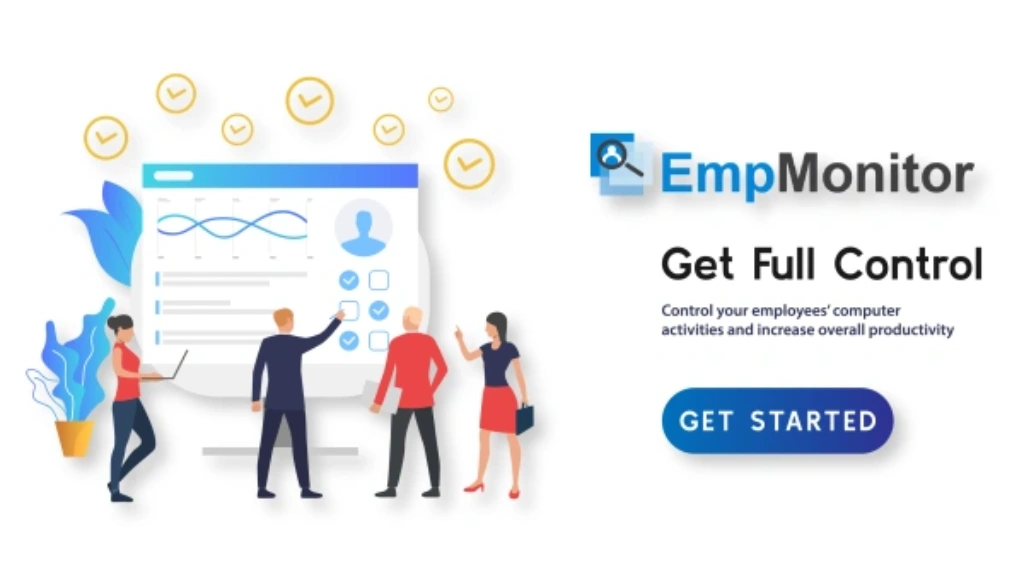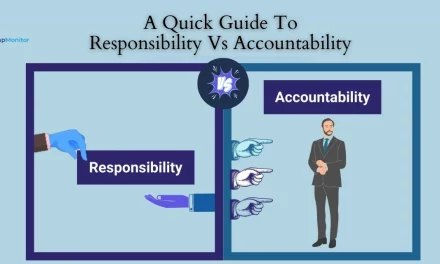Productivity defines how efficiently a team turns time and effort into meaningful results. Yet, most businesses only scratch the surface when it comes to measuring it. That’s where understanding the right productivity metric comes in. These measurements go beyond just numbers; they reveal how your employees perform, how well projects move forward, and whether your organization’s goals align with daily efforts.
Tracking the right metric helps companies uncover inefficiencies and identify ways to make operations smoother. When businesses know how to evaluate productivity accurately, they can make smarter decisions about training, workload management, and resource allocation. Let’s explore the key metrics every organization should keep an eye on—and why they matter more than ever.
In a hurry? Listen to the blog instead!
What Is The Value Of Measuring Productivity?

To truly be productive in the workplace, leaders need a clear picture of how each department functions, where time gets wasted, and how collaboration impacts overall performance. This understanding helps managers make informed choices about workflow optimization, employee engagement, and long-term growth.
1. Time to Complete Tasks
One of the most straightforward indicators of performance is how long it takes an employee to complete a task. This productivity metric offers valuable insights into how efficiently your team uses time and whether workloads are distributed evenly. Tracking completion times helps identify potential bottlenecks, process inefficiencies, or skill gaps that might be slowing down progress.
It also enables managers to evaluate if tasks are realistically assigned based on complexity and available resources. Beyond assessing speed, this metric highlights where employees might need extra training or support to perform better. Over time, analyzing these numbers helps forecast project timelines more accurately and set achievable performance benchmarks. When paired with qualitative feedback, this productivity metric provides a well-rounded understanding of both individual capabilities and overall team efficiency, helping leaders make smarter operational decisions.
2. Overtime Hours
Working extra hours occasionally can boost output, but constant overtime often signals inefficiencies or unrealistic expectations. Monitoring overtime is a valuable productivity metric because it helps identify burnout risks and resource imbalances.
High overtime might mean employees are overworked, while too little could indicate underutilized potential. The goal is to maintain a healthy workload balance—one where everyone contributes effectively without stretching beyond capacity. This data also helps organizations make better staffing decisions, preventing burnout and maintaining morale.
3. Attendance and Punctuality

When employees are punctual and dependable, team operations run smoothly. However, repeated absences or late arrivals can create ripple effects, forcing others to pick up the slack. Regular attendance reviews not only boost accountability but also highlight opportunities for improving workplace culture and employee satisfaction.
4. Tasks Completed
Numbers often tell a compelling story. Counting tasks completed within a given time frame offers a practical productivity metric for evaluating overall performance. However, quantity alone can be misleading. A high task count means little if the work quality isn’t up to standard.
That’s why this measure should always be paired with quality-based metrics. Tracking completed tasks helps managers identify top contributors and provides a foundation for performance reviews, workload distribution, and project planning. It also ties closely with understanding the project productivity metric—the balance between time invested and outcomes achieved.
5. Quality of Work
Productivity means little without quality. Measuring the quality of output ensures your team isn’t just completing tasks quickly but doing them well. This productivity metric can be assessed through feedback surveys, peer reviews, or numeric scoring systems that evaluate consistency and precision.
Maintaining high standards reduces rework, improves client satisfaction, and boosts trust within teams. It also highlights employees who go above and beyond expectations, offering opportunities for recognition and growth.
6. Error Rate
Every business faces occasional errors, but the frequency and type of mistakes matter. The error rate productivity metric evaluates how often outcomes deviate from expected results. A high rate could signal poor communication, unclear procedures, or skill gaps.
By analyzing where and why errors occur, managers can refine training programs, streamline workflows, and improve overall accuracy. When employees understand the importance of precision, they naturally become more responsible and productive in the workplace.
7. Productivity per Hour

While higher numbers often indicate efficiency, context matters. Task complexity, available tools, and collaboration levels all influence output. This metric helps managers promote balance—encouraging efficiency without compromising quality.
8. Capacity Utilization
Capacity utilization examines how much of an employee’s available time is spent on meaningful tasks. It’s a strategic productivity metric that reveals whether workloads are well-distributed or if certain roles need adjustment.
When capacity utilization is too low, it suggests underused potential. When it’s too high, burnout risks increase. Striking the right balance ensures that employees contribute their best without feeling overwhelmed.
This measure also connects closely to organizational agility—how quickly teams can shift priorities when projects demand immediate attention.
Read More
11 Essential Productivity KPIs And How To Measure Them In 2025
The Ultimate Guide To Productivity Measurement: 5 Easy Strategies
9. Idle Time
Idle time represents those moments when employees are unable to work productively due to obstacles like delayed approvals, unclear priorities, or technical hiccups. Monitoring this metric helps uncover hidden inefficiencies that quietly reduce overall output and slow project momentum. When teams frequently experience downtime, it’s often a sign that workflows or communication channels need attention.
Reducing idle time doesn’t always call for major overhauls—sometimes, small operational tweaks can make a big difference. Streamlining communication, providing the right tools, or speeding up decision-making processes can help employees stay engaged and productive. Even minor improvements, such as better task allocation or clearer guidelines, can lead to noticeable performance gains. By strategically addressing downtime, organizations not only boost efficiency but also strengthen accountability and employee satisfaction, both of which directly contribute to maintaining a healthy productivity metric across all departments.
10. Team Productivity
Team performance goes beyond individual efforts. This productivity metric evaluates how well employees collaborate to achieve shared goals. Successful teams manage to coordinate their work seamlessly, meeting deadlines while maintaining quality.
Managers can use data from team performance to refine group structures, assign roles more effectively, and set realistic expectations. When everyone works cohesively, projects move faster, and outcomes improve. This transition brings us to a crucial factor influencing collaboration—meeting efficiency.
11. Meeting Effectiveness

A well-conducted meeting should encourage open discussion, clarify priorities, and motivate teams to take actionable steps afterward. If analysis shows that meetings often end without clear takeaways or accountability, it’s a sign that adjustments are needed. Streamlining agendas, keeping discussions focused, and ensuring follow-ups are documented can significantly improve overall efficiency. When businesses refine how meetings are conducted, employees gain more uninterrupted time to concentrate on tasks that directly advance company goals—a key factor in maintaining strong metrics across teams.
12. Customer Satisfaction
Customer satisfaction is an indirect yet powerful productivity metric that measures how well employees meet expectations. When teams perform efficiently and maintain high-quality standards, customers notice.
Tracking metrics like CSAT, CES, and NPS helps determine how internal productivity influences external results. A motivated and well-supported workforce naturally delivers better customer experiences, boosting loyalty and long-term growth.
As we focus on external outcomes, it’s equally important to measure responsiveness—a reflection of how efficiently employees handle customer needs.
13. Response Time
Response time tracks how quickly your company reacts to inquiries, feedback, or support tickets. It’s a simple yet insightful productivity metric that reveals operational agility.
Quick responses indicate a strong commitment to service, while delays may highlight inefficiencies or training needs. By improving communication channels and setting clear response protocols, businesses strengthen relationships and boost satisfaction levels.
When all these metrics come together, they give organizations a clear framework for improving performance. But numbers alone aren’t enough—you need the right tools to track, interpret, and act on them effectively.
Where EmpMonitor Fits Into the Picture?

EmpMonitor helps managers get a clear view of how employees use their time, where bottlenecks occur, and how to make smarter decisions about task management. It bridges the gap between observation and insight, offering accurate data that supports both accountability and transparency.
When companies learn how to measure corporate employee productivity metrics efficiently, they gain the ability to balance workload distribution, spot top performers, and identify underutilized resources. That’s exactly what EmpMonitor empowers organizations to do.
Key Features of EmpMonitor
EmpMonitor isn’t just a monitoring platform—it’s a performance intelligence tool designed to make teams more effective and productive in the workplace. Here’s how it stands out:
- Real-Time Activity Tracking
EmpMonitor provides live insights into daily employee activities, making it easy to see where time is being spent. This visibility allows managers to make instant adjustments that improve output.
- Automated Reports and Analytics
With detailed analytics, EmpMonitor helps companies identify trends across different teams and departments. The platform automatically compiles reports that highlight essential data like attendance, task progress, and overall performance.
- Productivity Insights
This feature offers a deep dive into specific performance areas. You can assess productivity patterns, track time allocation, and compare them against business goals—all from one dashboard.
- Attendance and Timesheet Management
EmpMonitor simplifies attendance tracking with precise timestamps. It not only reduces administrative effort but also ensures accurate evaluation of time-based performance metrics.
- Remote Workforce Monitoring
For hybrid and remote environments, EmpMonitor ensures accountability by monitoring active hours and application usage, maintaining transparency and trust between teams and management.
- Security and Compliance
Data protection is a major concern for every business. EmpMonitor keeps all performance records secure and compliant with company policies, providing safe insights without compromising employee privacy.
Together, these features make it a comprehensive solution for those wondering how to make employees more productive while maintaining fairness and respect in performance evaluation.
Bringing It All Together
Tracking the right productivity metric isn’t about micromanagement—it’s about creating awareness and direction. Each metric tells a part of the story, but when analyzed collectively, they reveal the full picture of your organization’s health.
Businesses that prioritize performance measurement are better equipped to handle challenges, adapt to changes, and maintain long-term stability. Whether it’s improving task efficiency, reducing idle time, or enhancing team collaboration, consistent monitoring builds a culture of accountability and progress.
EmpMonitor acts as a reliable partner in this process, ensuring every metric translates into actionable insight. When leaders use these tools wisely, they not only measure results but also inspire a workplace culture rooted in purpose and improvement.
Conclusion
Success doesn’t come from working harder—it comes from working smarter. The right productivity metric gives leaders the clarity they need to identify what truly drives performance. When combined with reliable tools like EmpMonitor, these insights transform everyday operations into measurable achievements.
By embracing these 13 essential metrics, your organization can develop strategies that increase efficiency, strengthen collaboration, and improve satisfaction across all levels. Ultimately, understanding productivity is not about numbers alone—it’s about empowering people to reach their potential, together.
FAQs
- What’s the most effective way to motivate employees without relying on incentives?
The most effective approach is to build a culture of recognition and trust. Regularly appreciating effort, giving meaningful feedback, and involving employees in decision-making can boost motivation more than financial rewards alone. - How often should businesses review performance data?
It depends on the organization’s size and workflow, but monthly or quarterly reviews tend to strike a good balance. This frequency allows teams to spot trends early while giving enough time to implement and measure improvements. - Can remote teams maintain the same efficiency as on-site employees?
Yes, with the right tools and communication structure, remote teams can be just as efficient. Clear expectations, regular check-ins, and transparency in performance tracking are key to maintaining consistency and accountability. - How can managers handle underperforming employees effectively?
The best approach is to identify the root cause before taking action. Sometimes underperformance stems from unclear goals, lack of resources, or misalignment with the role. Coaching, training, or role adjustments can often resolve the issue. - What role does technology play in improving workplace performance?
Technology simplifies monitoring, reporting, and collaboration. With data-driven tools, managers can make informed decisions, automate repetitive tasks, and focus more on strategy and employee development instead of manual oversight.










